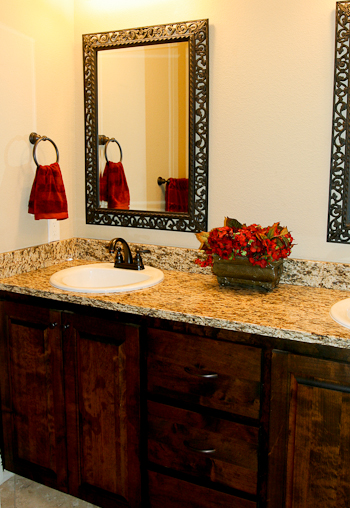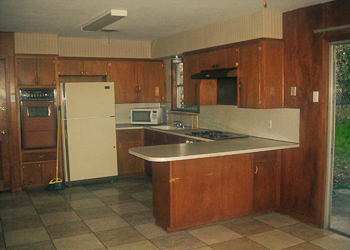Deciding on a Granite Backsplash or a Tile Backsplash?










When you replace a countertop (or install one on new cabinets), you will need to decide if you want a tile backsplash or a granite backsplash (or marble, or quartz, whatever your new countertop is made from).
One way or the other, you will need a backsplash, to keep water from running down the wall between the back of your counter and the wall.
What Do Most People Do
From our experience, we can share this with you:
- Most of our clients put in a new tile backsplash for kitchens in single-family houses. Even more so if it’s in a more expensive neighborhood. Some opt to keep the old tile backsplash, but that isn’t always straightforward, and doesn’t always look very good with the new countertops.
- Condo kitchen are more likely to get a short (4-inch) granite backsplash than single-family homes. (Or marble or quartz to match the counters.)
- We install a LOT of 4-inch granite backsplashes to match bathroom counters. Since many of our client’s granite bathroom countertops are fabricated from remnant granite from our shop off North Lamar in Austin, one big thing that helps to make the decision is whether or not the remnant is big enough for splashes. The smaller the counter, the easier it is to find a remnant that is big enough.
- We think it looks way cool to put in a taller granite backsplash (5, 6 or 7 inches), but full-height granite backsplashes that go all the way up under the upper kitchen cabinets often look really busy.
How to Make the Decision about Granite Backsplashes
- Per square foot for the material, granite is almost always more expensive than tile when used as backsplash material. BUT, less granite is used in a typical backsplash than when the area is tiled. This is because people usually put tile farther up the wall (in the kitchen or the bathroom) than they would put a granite backsplash.
- When we quote a price for granite backsplashes, the price includes installation. This is almost never the case for price quotes for tile unless you are using a general contractor. If you’re comparing the two options, you will need add up the cost of the tile, the morter, the grout and the labor charges and compare that total to the cost of the granite backsplash. You will also need to buy more tile than the area covered, to account for the waste of cutting, and broken tiles. (The smaller the tile, the less extra you will usually need).
- If you are using very simple or neutral colors and materials in most of a bathroom, a tile backsplash is an opportunity to introduce a little pizazz without having to buy lots and lots of $30-per-sqaure-foot sheets of mosaic tile – sometimes just a few square feet will do the whole job. It’s also a good way to tie in the countertops to the same tile if it’s used decoratively in the shower.
- If your bathroom has a lot of other strong design elements, a granite backsplash that matches the countertop can help keep things looking cohesive.
- If you hate cleaning grout, granite backsplashes don’t have any!
- Granite backsplashes are almost always less of a hassle for the homeowner because they are installed at the same time as the counter. That means no more time off work, or more time waiting for the tile guy to show up.
Our usual advice is this: Ask for a quote.
Sometimes the price makes the decision easy. If you’re on the fence, get quotes from us, and quotes for tile, and then decide where your comfort zone is for the combination of Price+Time+Coordination for the different options.
